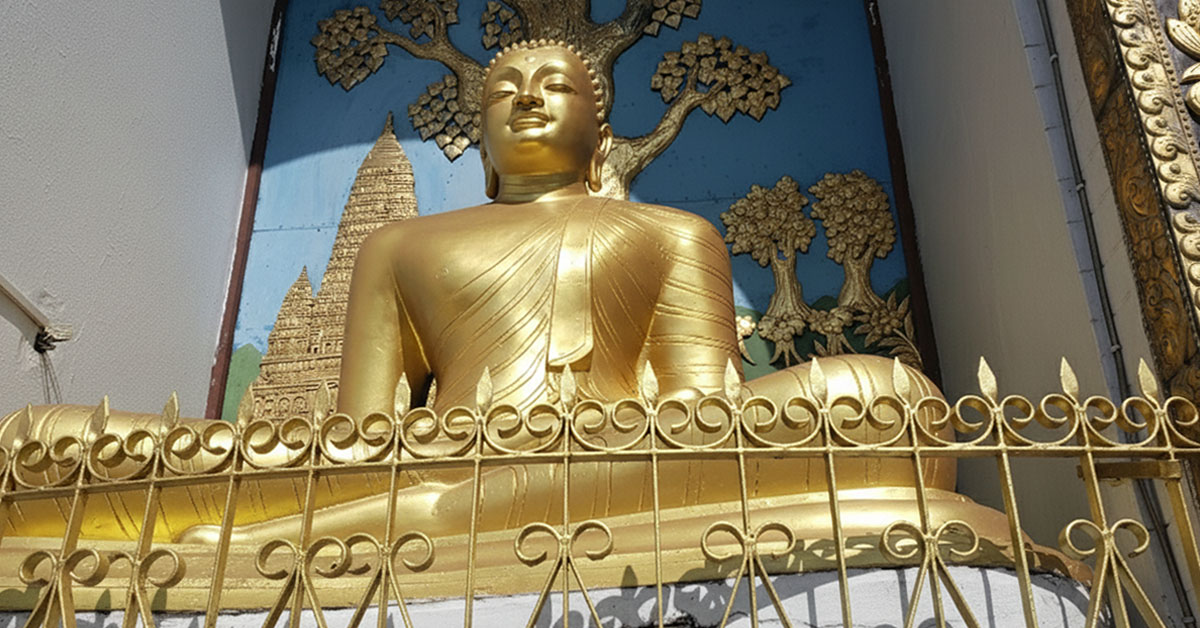From Lumbini to Kyoto: The Buddha's Global Influence
Last Updated: September 5, 2025
Tweet

For those who seek more than just a passport stamp, some journeys are inward as much as outward.
Today, let's walk a path that began over 2,500 years ago under a sal tree
in Lumbini and still whispers through the gravel gardens of Kyoto. It's the story of
Buddhism's gentle expansion, from a single enlightened being to a world tradition that has
reshaped how millions live, reflect, and understand suffering.
This isn't just about places. It's about what they represent. Lumbini is the seed. Kyoto is the
blossom.
What Makes Lumbini So Important?
A Beginning That Changed Everything
Lumbini, nestled in the southern plains of Nepal, is more than a dot on a map. It's where
Siddhartha Gautama was born, where a prince's life turned into a path that many still follow
today. When you walk near the Maya Devi Temple, you're not just observing a sacred site; you're
witnessing the spark that lit a spiritual movement.
There's a certain humility to Lumbini. You don't feel overwhelmed, you feel grounded. The Ashokan
Pillar, over 2,000 years old, marks the spot where Emperor Ashoka paid homage. Around it, sacred
ponds, ruins, and prayer flags tell stories without words. Everything whispers: "This is where it
all began."
Please click here to get the complete details on available placement, classes, accommodation, cost, visa, airport arrival and the rest of it.
Get More Info Now »
Why Lumbini Feels So Personal for the Traveler
- Stillness matters: In a world of noise, Lumbini offers quiet. Not the kind that's empty, but the kind that fills you in new ways.
- A patchwork of faiths: Walk through the international monastic zone and you'll see stupas and monasteries built by nations near and far, Thailand, Germany, Korea, Sri Lanka. It's a visual map of Buddhism's global journey, all rooted in one place.
- You get to just be: Whether you're meditating under the Bodhi Tree or walking the garden paths alone, Lumbini gives you permission to slow down.
If you're someone who values depth over display, Lumbini resonates. You don't have to be a monk to feel something shift inside.
Kyoto: Where Buddhism Blossoms in Silence and Art
The Living Tapestry of Zen
Thousands of miles and centuries away, Kyoto tells a different chapter. Here, Buddhism is lived,
not just as a philosophy, but as a way of being.
Kyoto is not just a city; it's a canvas. Over 1,600 temples. Rock gardens that speak louder than
words. Wooden walkways under cherry blossoms. And tea ceremonies that feel like a form of
meditation in motion.
Zen Buddhism found a home in Kyoto, and in doing so, it reshaped how a culture expresses beauty,
impermanence, and clarity.
Why Kyoto Leaves a Mark
- Temples that teach without sermons: Whether it's the golden glow of Kinkaku-ji or the simple elegance of Ryoan-ji's raked stones, Kyoto's temples make you feel something, even when you're not sure what.
- Participating, not just observing: You can sit for zazen meditation in Shunkoin or taste the quiet wisdom of shojin ryori (Buddhist vegetarian cuisine) at Tenryu-ji. You don't just see Buddhism, you experience it.
- Seasons that speak philosophy: The falling cherry blossoms in spring, the fiery leaves of autumn, Kyoto reminds you, gently, that everything passes. And that's okay.
If Lumbini grounds you, Kyoto refines you. One connects you to the origin, the other to the artistry of what's become.
Lumbini vs. Kyoto: Not a Comparison, But a Continuum
|
Aspect |
Lumbini |
Kyoto |
|
Role |
Birthplace of the Buddha |
Cultural heart of Zen |
|
Spiritual Focus |
Origin, Theravada, global monasticism |
Zen practice, aesthetics |
|
Experience |
Pilgrimage, humility, stillness |
Immersion, refinement, beauty |
|
Best For |
Peace seekers, roots-oriented travelers |
Cultural explorers, meditators |
|
Vibe |
Rural, slow, sacred |
Urban, serene, elevated |
There's no winner. Only different ways to walk the same path.
Why These Destinations Matter to the Thoughtful Traveler
It's More Than Sightseeing
Some people travel to escape. Others travel to remember something deeper, something within themselves. Both Lumbini and Kyoto offer that opportunity, but in different languages.
- In Lumbini, you touch the raw beginnings. The simplicity reminds you that even world-changing ideas start small. And sometimes, the biggest shifts happen in silence.
- In Kyoto, you see what happens when an idea matures, how it takes root in art, daily rituals, and mindful architecture.
You're not just learning about Buddhism. You're living alongside its evolution.
Please click here to get the complete details on available placement, classes, accommodation, cost, visa, airport arrival and the rest of it.
Get More Info Now »
For the Seeker, the Question Becomes:
Do you want to feel the heartbeat of where it all began, or walk through the echo of how it
was interpreted, transformed, and lived?
The truth is: you don't have to choose.
Conclusion: Walking the Buddha's Journey, One Step at a Time
From the dusty paths of Lumbini to the refined gardens of Kyoto, the journey is not just
geographical, it's personal. Each destination mirrors a phase in the evolution of the Dharma.
Lumbini shows you where the seed was planted. Kyoto shows you how beautifully it bloomed.
As a traveler, visiting both is like tracing the life of an idea, from its humble birth to its
global resonance. And in doing so, you may discover your own version of stillness, clarity, and
peace.
You don't need to be a monk to walk this path. You just need to be present.
To share this link:
Please click here to get the complete details on available placement, classes, accommodation, cost, visa, airport arrival and the rest of it.
Get More Info Now »


